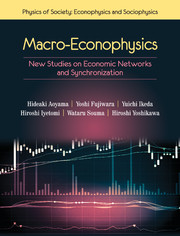Book contents
3 - Income and Firm-size Distributions
Summary
Society is not homogeneous, and those who do not deliberately close their eyes have to recognize that men differ greatly from one another from the physical, moral, and intellectual viewpoints.
Vilfredo ParetoDistribution of income is a vital issue in every country. The stability of society crucially depends on it. Piketty (2014) in his worldwide bestseller Capital in the Twenty-First Century once again reminded us of the fact that income and wealth are very unevenly distributed in most advanced countries. In the late 19th century, Pareto (1897) already found that income distribution is so skewed that it is actually what we now call the Pareto distribution. Exploration into the mechanisms generating the observed empirical income distribution was started by Gibrat (1931) and Champernowne (1952, 1973). Following their lead, this chapter presents modern treatments and our own results.
What is said about wealth can also be said about firms: The size of firms, measured by the profit they make, the number of employees or assets, differ from firm to firm, by much more difference than people's income or wealth. For these reasons, we first present many distribution functions which were proposed to explain the distribution of income, wealth, and firm size (for details, see Kleiber and Kotz, 2003). And then we will study the properties of large values that result from power-law distributions in detail, as powerlaw distributions are the most common class of distributions that we observe in economic systems, both people's income and firm sizes.
One caution: in summarizing various distribution functions, the reader may be tempted to play the fitting game. One may use all the possible functions in the following section or that he/she can think of to find the best-fit to a given distribution. It is a fruitless effort beyond a certain point. Imagine that a variable xtakes only seven values. Then we have seven data, the number of occurrences at those seven values of x. Anyone clever enough can think of a function with seven parameters, that fits the data perfectly. But it is evidently fruitless. Nothing was revealed by such a fit. Only when it is fitted with a small number of parameters, does it lead to some insight to the deep nature of the data (Aoyama and Constable, 1999).
- Type
- Chapter
- Information
- Macro-Econophysics , pp. 53 - 96Publisher: Cambridge University PressPrint publication year: 2017



